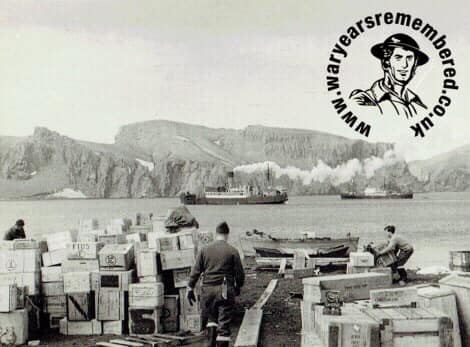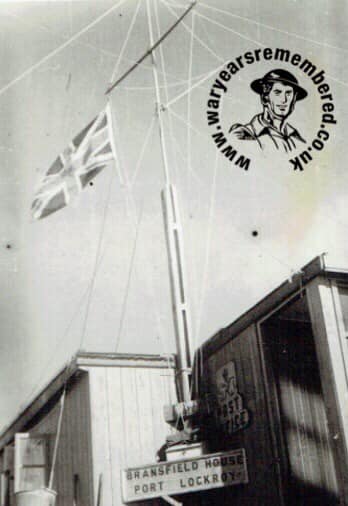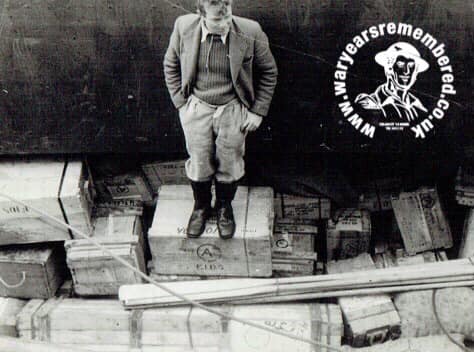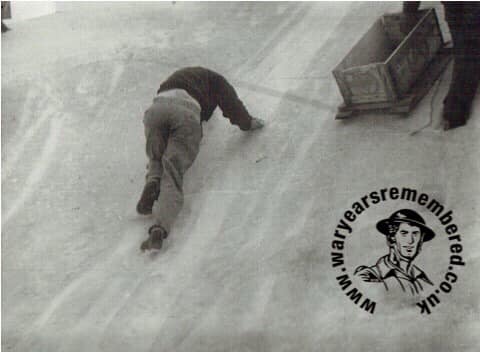Lieutenant Colonel Robert Blair Mayne DSO (3bars)
Adventure Explorer and Surveyor
A story not many people will know and the importance of what is here.
https://www.facebook.com/WarYearsRemembered/
The Antarctic Journal of Paddy Mayne
At the height of the Second World War the British Government conducted a wartime expedition to Antarctica called Operation Tabarin. Whilst under the guise of monitoring enemy shipping in the Antarctic, the reality was that Operation Tabarin was focused upon establishing manned British bases in the Antarctic region to counter the territorial claims of Argentina and Chile.
With the cessation of hostilities, the operation of the bases was transferred to the newly formed Falkland Island Dependencies Survey (FIDS). The already established survey and science programmes were further expanded with the establishment of more bases, further strengthening the British claim to these Antarctic territories. In this immediate post-war period it is not surprising that many ex-service personnel were interested in conducting this work and three ex-SAS members joined the first FIDS expedition leaving the UK at the end of 1945. Whilst the expedition was led by the Naval Surgeon Commander Bingham, Lieutenant Colonel Robert Blair “Paddy” Mayne DSO, the famed leader of 1 SAS was the second in command. He was joined on this expedition by his ex-SAS colleagues Major John Tonkin and Major Mike Sadler. The expedition was charged with relieving the original Operation Tabarin personnel and establishing a new survey orientated bases including one at Stonington Island in Marguerite Bay, much further south on the Antarctic Peninsula.
Like most FIDS, Mayne kept a journal detailing his experiences and he took many photographs capturing both the places he visited and the men he was with including his ex-SAS colleagues. Following his untimely death in a traffic accident in December 1955, his journal, together with the associated photographs, were kept by the Mayne family together with a collection of records and artefacts relating to his military service.
Blair Mayne’s association with Antarctica has to date been little known and documented. Hamish Ross’s biography Paddy Mayne references Mayne’s Antarctic diary and through following up on this source I discovered that the collection of artefacts pertaining to his military service had been donated by the Mayne family to the War Years Remembered Museum in Ballyclare, Northern Ireland. On contacting David McCallion, the curator of the museum, it became clear that he was unaware of the diary’s existence as the collection was still in the process of being catalogued. Thanks to David these important Antarctic artefacts are now available for research and evaluation.
We are lucky in that many FIDS Antarctic diaries still exist and they are a very valuable source of detailed information about the exploration of this relatively unknown region but they often start when the author is either on the ship heading south from the Falkland Islands or has actually arrived in Antarctica. However, Mayne’s diary is unique amongst these journals in that it starts whilst in transit from the UK and so provides valuable information about the complex logistics of moving equipment and personnel in these immediate post war months and in doing so fills the many of the gaps our knowledge. Reading the pages today, Paddy Mayne’s voice rings out clear as he describes his journey South and his experiences in the Antarctic.
Mayne is often a larger than life character and many myths and stories have been written about his life, particularly about his distinguished service record with the SAS resulting in his DSO with 3 bars and a recommendation for a Victoria Cross. In addition to this he was also a famous sportsman representing Ireland on many occasions and following his short period of service with FIDS he was a successful solicitor. The journal and photographs dispel a previously held belief that Mayne only made it as far south as the Falkland Islands, before he had to be invalided home prematurely due to a recurring war time injury to his back. The reality is that Mayne clearly planned to fully support the exploration and survey elements of the FIDS expedition and that he did make it to Deception Island as well as Port Lockroy in Antarctica before prematurely having to head back to Port Stanley in the Falkland Islands where he was hospitalized prior to returning home to Ireland to convalesce.
By Geoff Cooper Heritage Projects
Photograph captions
Photo 83 – The repacking of supplies and provisions for the British Antarctic bases at Deception Island, January 1946.
Photo 71 – Re-asserting the British claim to sovereignty over the Antarctic Territories - The Union Flag flying over Base A,Port Lockroy in January 1946.
Photo 57 – The A stenciled on the packing cases denotes supplies destined for Base A, Port Lockroy.
Photo 53 – An improvised sledge made from a Base A packing crate
The story grows day by day at War Years Remembered, through partnerships with some unique people and organisations.



